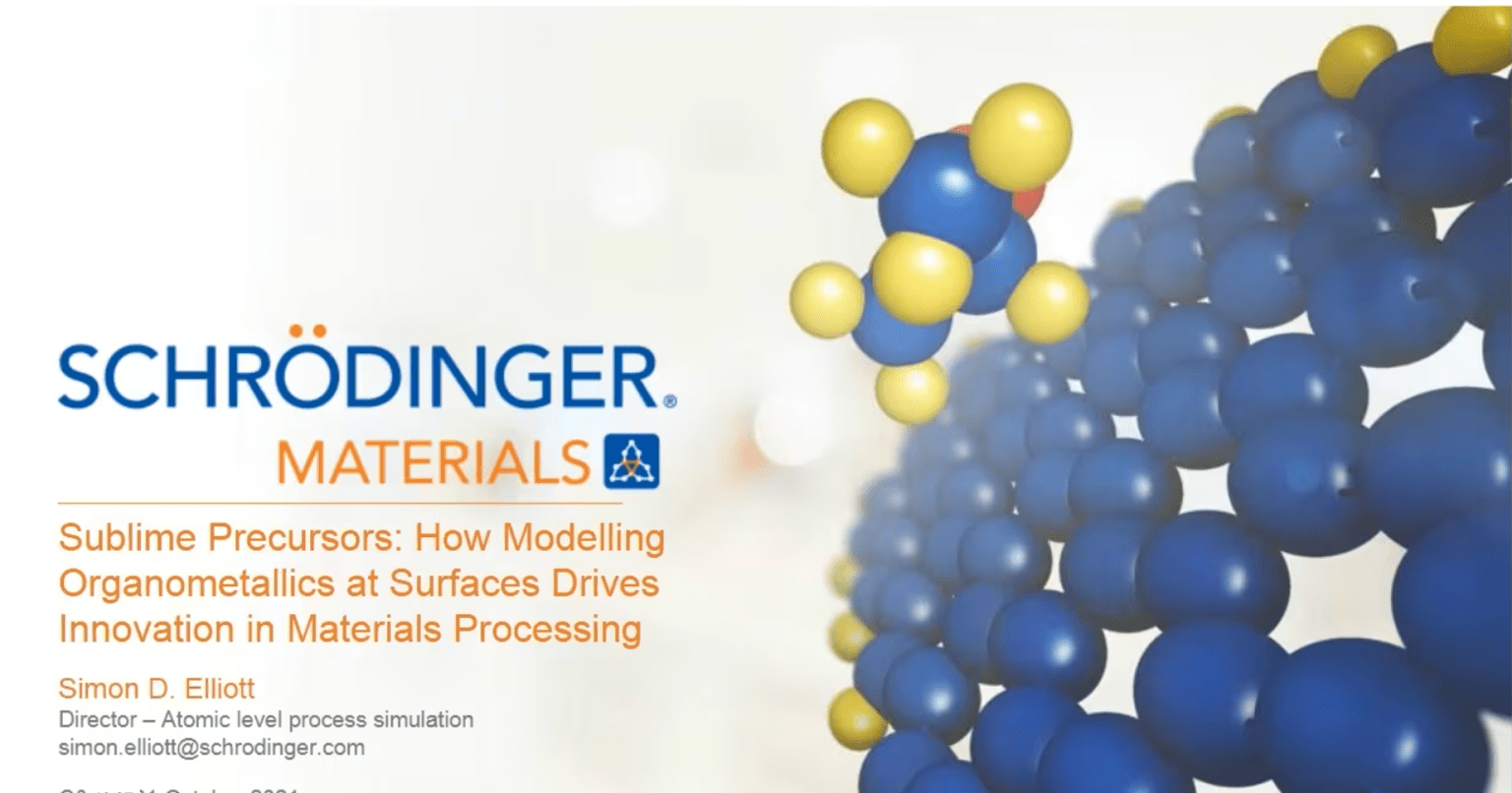
Sublime Precursors: How Modelling Organometallics at Surfaces Drives Innovation in Materials Processing
Speaker
Simon Elliott
Director- Atomic level process simulation
Abstract
The rich and often surprising chemistry of organometallic (or metalorganic) complexes means that atomic-scale simulations are an important way to elucidate structure, bonding, and reactivity. In this talk, we look at simulations of organometallic complexes as precursor molecules for the deposition or etching of materials. Chemical vapor deposition, vapor phase epitaxy, atomic layer deposition, and atomic layer etching comprise a family of materials processing techniques that all depend on three key precursor properties: volatility, reactivity, and decomposition, and these are the properties focused on in this talk. For example, precursors for atomic layer deposition should ideally show a wide temperature range for reactivity, between a low evaporation/sublimation temperature and a high decomposition temperature. However, computing physical properties (such as volatility) and chemical reactivity (such as ligand exchange or adsorption to surfaces) is also important for organometallics in homogeneous and heterogeneous catalysis. For reactivity, we present simulation workflows integrating quantum mechanics with automatic structure generation, so as to investigate the thermodynamics of adsorption during growth or etching and the bond dissociation reactions that are typical of thermal decomposition. Both approaches are based on density functional theory calculations with special efficiency settings for metal complexes. In addition, we present a new machine-learnt model that predicts evaporation/sublimation temperature as a function of vapor pressure for organometallic complexes of the fifty most common metals and semi-metals to an average accuracy of +-9 degrees C. The three key properties can thus be quantified in silico, either for in-depth study of a single system or for high-throughput computational screening of candidate molecules.